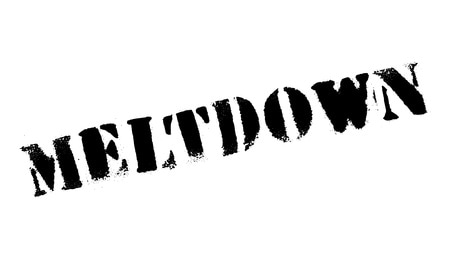|
Early in my career I once managed a high performing leader who would often express feeling overworked and unsure of their role. In an effort to solve the problem, my gut reaction would be to try to control and fix. I’d come up with a list of parameters on expectations and try to clarify roles. I’d give guidance on where to spend more time vs. less. I’d wrap the issue up like a present, tie it with a pretty bow and then put it on a shelf. Problem solved. Or so I thought. The same theme with the same person would resurface. And I noticed I’d become increasingly exhausted trying to solve it. In hindsight, I realized what I was really missing in solving this was one thing: curiosity. What was needed was for me to get curious and ask of them questions like: What do you really want? What would that look like? What do you need more of/ less of from me? How can I be a better manager to you going forward? Instead of burdening myself to solve the recurring issue with excel spreadsheets, roles and task lists, an easier path was to help this capable leader get clear on what it actually was they really wanted. I’d come to understand that underneath the real issue was their desire to be recognized for their contributions in a way that was meaningful to them. Underneath it was their wanting to express what they needed to thrive as part of our team. What they needed was a collaborative process that was relational, taking into account how WE worked together. Now as an executive coach for over ten years, when I see managers default to the exhausting control and fix mode of management, I challenge them to cease being a fixer and to become more of a coach. Solving the hard issues requires getting to the bottom of the issue. And getting to the bottom of an issue requires of us to be engaged and curious. Sometimes what’s needed is less “that’s yours and this is mine” and more “together we are.” Farhana Huq is an Executive and Leadership Coach, Surfer, Global Explorer, and Founder of Surf Life Executive Coaching and Brown Girl Surf
1 Comment
I’ve been writing a lot of late about the non-profit I ran of 11 years that closed. It had a worthy mission to economically empower immigrant and refugee women through entrepreneurship and English training in the San Francisco Bay Area. After 10 years running it, I took a sabbatical for rest and much needed time off. Upon returning, I came back to a skeleton of an organization that was running a $50,000 deficit, all occurring while I was gone. There were many narratives as to exactly why we ended up in this position. The interim leader’s narrative ranged from ‘I was left to manage a house of cards’ to ‘the staff was not matched in the right positions for their skill sets’ to ‘our board chair wasn’t strong enough.’ Some of the Board Members’ narratives were ‘you can’t leave for 4 months and expect everything to be hunky dory’ to ‘you left a COO in charge, not a CEO’ to ‘you didn’t share with us how much this was being run like a start-up.’ Some staff outright blamed the interim leader, some the Board. The most corporate members of the Board blamed me, because to their mindset, the buck stops with the CEO. Forget about any non-profit, “kumbaya” notion of shared leadership. It was a terrible time trying to stay afloat amidst a whirling sea of vastly different narratives. As well, there was the backdrop of the recession we were in at the time, which was more fact than narrative. After having ample time to reflect, heal, do my own internal work, what became apparent to me was that I never really formed my own narrative in the process. I listened to everyone else’s. At one time, I had been the outreach person for this organization, the programs person, the grant writer, the major gifts fundraiser, the website developer, the bookkeeper, the computer tech person, the visionary leader. I grew an idea I started from my bedroom desk when I was 24 years old with $1,000 into an incorporated non-profit organization with an official Board. I was the one person with 360 degree experience of the entire enterprise. And much like a deer in headlights, I was so caught off guard coming back to this I could not even form my own narrative. While having my own narrative was important to me in making sense of this all, I also learned that when things go South like this, it never is about any one person’s narrative. Ask anyone and they would all have a different perspective as to the “why” of this situation based on their own life experience or values. To them, their version IS the truth. As a leader looking back on this, I can say the learning is that we have to take responsibility and accountability for each of our roles in leadership. The learning is that nobody is perfect. The learning is in believing everyone did the best they could in the given circumstances, recession and all. Sometimes that is all we can do. We should own up to our shortfalls versus passing the blame and trying to justify why something wasn’t our fault, or our responsibility. We should understand we were all accountable in some way, and that for great ideas or organizations to thrive, the leadership must be shared. Going forward, I choose a no frills narrative of “what’s so. “ What’s so is I founded and ran a great non-profit, co-built together with wonderful colleagues, Board members, advisors, funders, volunteers and staff. What’s so is I went away for a much deserved break on a Board approved sabbatical. What’s so is the organizational leadership was not able to raise sufficient funds or effectively orchestrate the team to achieve their goals. What’s so is upon my return, we attempted to merge the organization with a larger non-profit. What’s so is we were unable to do so for various reasons, including the recession. What’s so is we closed. What’s so is I learned the lessons of a lifetime. That’s what’s so. Farhana Huq is an Executive and Leadership Coach, Surfer, Global Explorer, and Founder of Surf Life Executive Coaching and Brown Girl Surf
Journal Excerpt: The Fall of C.E.O. Women, The Start of brown girl surf December 18, 2011 I’m alive and I have all my limbs so I’m trying to put the closing into perspective. A lot has been done to dismantle the (C.E.O. Women) office. We’ve sold most of our assets last week and this week is the final push. The only thing is that we have no staff left – I’m the only one and so I have to manage all of the following:
I sent this list to my board chair and treasurer to let them know … But as it is, I’m left as the only one trying to manage the final three days of closing of the office. People expect way too much when you are a Founder. The good news is that I raised an extra $15,000 from foundations and donors and that the government approved our $20,000 reimbursement request so we will have enough for payroll, which will limit the board’s liability. They were going to float a loan for payroll as well which I was happy about but now they don’t need to. My friend and board member gave me a $1,750 (personal) loan to tide me over until we can collect on all the grants. … I have been actively trying to find a home for Grand Café in it all … because we owe the bank for our line of credit … It is a hard decision because that is nine years of work/research that went into building that asset (and $500,000) and I’m not sure what the bank will do with it at this point but I want it to land somewhere good, but I also want this to be done, so I’m torn … I have been surfing which I’m glad about but skipped my Friday session down in Santa Cruz as I normally do. I just felt like last week was intense and I couldn’t focus so much on my surfing, but I did get out on Friday and Saturday to Ocean Beach which I was really glad about. I also started to get a lot of momentum on brown girl surf … I am so proud of the (web) site and honestly it has been like therapy. After coming home dismantling an 11 year old non-profit I built on my back, I can work on creating something new which gives me a lot of energy. I’m excited that I am so excited about this … … If it weren’t for surfing and brown girl surf, I’d be in bad shape I think. But I feel calm and collected … but I just want this saga to be over with … I have such a wide range of emotions regarding the board that it’s hard to make sense of them. On the one hand, I have felt left in a lurch by them all year – only half of them fundraised and did what they could … On the other, they are my personal contacts and networks, and amazingly, not one member resigned since the crises … most of them have given or raised significant donations (totaling over $96,000) … So it’s not bad for a small board … I’m glad that brown girl surf will not have one going forward. I just want to be free from this all - free from the blame, free from the stress, free from this identity that I have held for what seems way too long. I am Farhana and I am the Founder of C.E.O. Women, but it is not my baby and I don’t feel that way about it … … It sucks being a Founder. Your DNA is imprinted into the organization and work until the day you leave/ relinquish it but I feel trapped and not in a position to relinquish at this point. I can’t wait until it’s all over. I can’t wait to run with brown girl surf and it’s exciting to see it come alive … Farhana Huq is an Executive and Leadership Coach, Surfer, Global Explorer, and Founder of Surf Life Executive Coaching and Brown Girl Surf
I founded and ran a non-profit organization for 11 years with an amazing mission – helping low-income immigrant and refugee women to become entrepreneurs and learn English. After 10 years of running it, I took a needed sabbatical to reflect and rejuvenate. An interim leader led the organization in my absence. When I returned a few months later, it was operating a $50,000 deficit, the first ever deficit in the history of the organization. As a Founder, this was devastating. It was like coming back at halftime to a 0-4 World Cup game and you’re on the losing team. It’s not impossible to bounce back, but it would take a level of effort I did not have in me after an already exhausting 10 years. The organization eventually closed. My last official day was the 21st of December eleven years ago. While I made peace with the closure, I never quite got over the loss of its most innovative program - a soap opera series designed to teach English and entrepreneurship skills to immigrant women. I worked on this idea for 9 years, raising about half a million dollars to develop 6 of 18 episodes. Upon closing, the series was given to the bank as collateral for a line of credit that leadership took out in my absence in order to finance the deficit. Giving over the program felt like a miscarriage, like it never got its fair chance to run. And truth be told, perhaps it was a little too early of an innovation for its time. Many funders resisted the idea of a remote, media-based learning program, now an ironic sentiment in these Covid times. This summer, on a long shot, I decided to reach out to the bank. I asked them to release the program series for me to resurrect. They agreed with full support. It was one of the best pieces of news of my career and life. If I learned anything through this experience, it’s to not lose faith in your ideas. Ideas take courage. Creativity takes courage. Speaking up takes courage. Honoring and holding worthy your ideas takes courage. And perhaps most of all, I’ve learned that there’s no timeline for courage. You are ready when you are ready. While I worked on this idea for 9 years it was the amazing team around me that brought it to life. Angelica Matsuno was the ah-mazing Co-Producer and Co-Writer who has been helping me to resurrect it. We were probably the most attached emotionally to this project. Nina Serrano was the incredible writer of the series and Marissa Aroy was the talented Director along with the ever capable Producer Niall McKay who all used their artistic skills, creativity, time and talent to give this idea life. There was also the programs team that worked on distribution, countless advisors, board members, clients and volunteers who helped take the idea to where it was. I’m forever proud of the work our organization did. And I am proud to return to this creative idea, with new eyes and wisdom, in service to all the people it was meant to impact. To view the program trailer, see below: I used to think that vision was mere “fluff” - not worthy of much work and time. It was more important to execute and provide products or services because those were more measurable and important at the end of the day. To me, investing time in creating a vision seemed extravagant at best. After transitioning out of a 15-year career as a non-profit leader and executive, I all of a sudden found myself without a North Star. I kept thinking of ideas and ways I could make things look different with a business or project, and I’d follow through by getting into full execution mode. But what I realized was that I was lacking a fundamental vision for my life. I know, how sad - a life with no vision. Mind you, I generally have lots of ideas – at times too many for my own good! It was as if I was executing projects and ideas, but I wasn’t sure exactly how they all tied in to the bigger picture of things and to my greater purpose. Have you ever had that feeling? Well, that feeling inspired me to share with you a few things I learned along the way about the importance of personal vision, and some steps you can take to craft yours and bring it to life, even when it seems far off! Step 1: Believe first. During my coaching journey, I discovered there was a neuroscientific explanation for the importance of vision. The scientific explanation came from Srini Pillay’s TEDx talk , a resource I have mentioned a few times in my previous posts. In short, Srini talks about the brain as having its own internal GPS system; our neural tissue actually has the ability to direct us towards our goals and vision as we take in information. This inputting of information into our “internal GPS systems” happens at a subconscious level. He notes that knowing our history and where we came from as well as utilizing our imagination and vision activates this action center in the brain, helping us move from point A to B. It’s no wonder vision is so stressed in organizations and the business world. If you think about it, as humans, we can’t organize ourselves in the right way without knowing what it is we are organizing around, whether personally or for someone else. Our minds work in a similar way. Pretty cool, eh? When I learned this, my previous assumption about “vision” turned from fluff to form, and certainly gave me something more marshmallow-like to chew on. So if you haven’t already, I’d highly suggest watching this awesome talk by Srini Pillay, called “The Science of Possibility”. It helped me understand the impact that visioning and imagining into the future has, and how vision can help us achieve our goals. Step 2: Understand the benefits of crafting a vision. Have you ever gone to an advisory meeting for a new start-up or a meeting at a place you’re volunteering for, and there was nobody there talking about the bigger picture purpose of the work? Perhaps you found yourself mired in the weeds of the “how-tos”? How did you generally feel? Inspired? Ready to roll up your sleeves and jump in? Lost? Smart leaders know that to keep people following, they must be able to hold a compelling picture of what could be in the future. Being able to point towards a North Star or greater mission helps connect and give our tactics and actions purpose. When we are able to hold a vision for ourselves in our lives, we become clearer about our own trajectory and transition. The clearer we are about our trajectory, the more likely we’ll be able to attract the resources we need towards it. Crafting a very personal vision is beneficial in the sense that you are creating an internal roadmap for the way forward; as a result, you spend less time on things that aren’t going to lead you straight to that vision. Take sports, for example. Growing up as a competitive athlete and member of the U.S. National Karate Team, I trained a great deal for competition. In the summers, I would do intensive training comprised of physical, repetitive regiments to prepare for competition. But when it came down to the pressures of actually competing and performing, it was the visualization and meditation work that paid off the most. Seeing myself go through my katas (forms) and winning matches was critical in helping me achieve and meet my goals. What I was doing was training both my body and mind to see the goal. Without the visioning, it would have been very difficult for me to succeed with just technique alone. So you can have all the skills in the world, but without personal vision, you may not succeed in achieving your purpose. Step 3: Employ visualization. Finding clarity in a vision is one of the hardest things for people in transition. Visualization can be a helpful tool in this realm. Very often, it’s necessary to go through a process, either with a coach or in a workshop setting, where you can experience a guided visualization process for what you want your future to look like. I remember when I was starting my coaching business and I was trying to reach a very broad base of entrepreneurs and leaders. I was struggling with how to market my services, as it felt like I was reaching out to so many different groups of people. My coach at the time had me do an exercise. She asked me to close my eyes and to imagine myself 5 years into the future. She asked me where I was working, how I was working, and by whom I was surrounded . I saw myself living in something akin to a very cool, somewhat Bohemian-looking treehouse, with all the amenities of a conventional house (yes, that’s really what I saw!) by the beach. I was running retreats, surfing and coaching executive women leaders. It was that clear. That’s when it hit me that I needed to really focus on integrating surfing more into my work coaching clients. This shifted things enormously for me. I went from feeling scattered to knowing who to target and what to communicate to my clients. There is a saying that you should start with where you want to end up. The benefit of getting clear on your vision is that it can tell you precisely where to start. In my work with clients, I often have them close their eyes and ask them to envision where they are working 3 or 5 or 10 years into the future, however far they are willing to go. I ask them to envision who is around them, and what those people are saying. This exercise helps them to gain more clarity on where they see themselves. I highly recommend engaging in a process like this. Step 4: Break it down, day by day. It’s not enough to have the vision; you have to find a way to break it down into daily to-dos, while always keeping the vision front and center. One of the practices I employ during my daily routine is listing the things that are going to make me the most happy and productive for the day. I do this with the intention of executing on my action items. I first start by writing down all that I am grateful for that day about my business and life. I then list what I want my dominant feeling to be that day – examples are happy, sad, determined, focused. And then I list the 5 or 6 things that I need to focus on that will make me the most happy and productive on that day. Like an athlete, I set my intention for the course and regiment of that particular day. This is followed by a process of setting a wild intention - an ultimate dream - which I write down as well. I learned this from a fellow coach and it has done a lot to help me get me focused in my days and proactively working towards my vision. When I started thinking about offering a Surf Life Executive Coaching retreat, I was somewhat terrified of doing it. What if it all goes wrong? What if I don’t get people to sign up? But holding to and returning to that vision each day and including steps in my process above is what helped me eventually launch the program here in Northern California. Step by step, I broke the vision down, and I slowly completed the planning and logistics necessary to hold the retreat, keeping my ultimate vision for it in mind the whole time. I can't stress enough the importance of vision in our life and business transitions. It can pay off innumerably to spend time crafting your North Star. Now that I've shared my thoughts on vision, I'm curious, where has vision played a major role in your life or transition? What tactics and resources have you used to help get clarity for your vision? I'd love to hear your thoughts! Like what you read? Subscribe to my newsletter!
Some of my first experiences with leadership began as a 14-year-old, when I started teaching martial arts classes for adults. I learned the importance of leading by example. I learned what it was to be in front of adults who were relying on me for guidance and support to grow their skills.
In my 20’s, my leadership journey further expanded after founding an organization that gave me the opportunity to not only grow and exercise leadership in ways that continually stretched me, but gave me the honor of working alongside some of the greatest, most courageous people I’d ever met in my life, from fellow scholars, small business owners, to social justice leaders, to corporate CEOs. After really thinking about this journey of leadership, and some of the characteristics of great leaders I met along the way, it was hard not to think of surfing. The similarities are uncanny, actually. Who would have ever thought surfing could be such a window into greatness? Below are 11 great leadership qualities I have seen in action over the years. 1. Great leaders commit to their word and follow through: In the way a surfer commits to a wave at the time of takeoff (the point where the surfer catches the wave and pops up on the board), when great leaders say they are going to do something, they actually do it. They commit to their word. When something changes on their end, they communicate it out or give advance notice. Doing what they say they will do builds absolute trust and confidence in their word. 2. They have balanced energy: Balance is at the foundation of surfing and is a quality I have observed in the greatest leaders I have met. They have a calm, balanced energy about them and are able to be fully present with you in the moment, even if they are extremely busy. They possess a balanced and inviting way of doing things. Many of them have a practice (yoga, running, meditation) or something that keeps them grounded. That energy is felt when you are with them. 3. They know when to be old skool: Great leaders are skilled in the art of relationships, and more importantly, they just know when to pick up the phone, old- skool style. They don’t send long, diary-like e-mails expressing their feelings and frustrations with a laundry list of things you did wrong or how they feel wronged. When shit goes down, they pick up the phone. They are courageous. They confront things head-on and know when a face-to-face conversation is warranted. Relationships matter to great leaders, and they know how to manage them. 4. They choose creation over victimhood: Great leaders have a creation vs. victim mentality. This means they focus on the ride – the art of carving through the wave - even if the wave is monstrous and gnarly. They are self-accountable and don’t blame others for their situation or their wipeouts. If something doesn’t go as planned, they regroup, try again, shift strategies and embrace a growth mentality, learning from the process. 5. They possess a passion for their craft: Much like a surfer, great leaders have a passion for their craft. They put the best intentions of the issue, cause or organization before their personal agendas. 6. They understand the greater powers at work: Like surfers who understand the power of the ocean, great leaders understand they are minute in the big scheme of things. They know when to be humble and lead from behind, and how to manage a healthy ego while being at the helm. They know how to use their ego selectively. 7. They are courageous: Like a big wave surfer tackling the world’s scariest waves, great leaders are courageous in their ability to confront uncomfortable situations and have those difficult conversations. They face their fears, and by standing in their power and speaking their mind, they are able to come to new understandings with those around them. 8. They are versatile: A surfer can be versatile in her ability to surf many different types of surfboards through many different types of conditions in the ocean. In the same way, great leaders tend to have broad experience in various aspects of their craft, and are versatile in what they do. Some of them may have started doing the most menial thing, but learned the ropes along the way and know what it feels like to be in the shoes of the people they are leading. 9. They respect others: As surfers learn to have a healthy respect for the ocean, great leaders operate from a baseline of respect for people, including their rivals. They are not the type who go around making up names for a colleague or boss, or talk badly about someone behind their back. They hold respect for others and know how to communicate their position, even if it is at odds with someone else’s. 10. They are able to see trends through multiple perspectives: A surfer goes through many perspectives – from assessing conditions on the beach, to being in the water taking the drop, to being in the ‘zone’, to duck diving under the wave. They are able to be in all perspectives. Great leaders are also able to be in a range of perspectives, understanding that not everyone will see something the way they do, but knowing how to cull the “trends” from varying perspectives around them. 11. They are curious: Just as surfers cross borders, curious about the next kind of wave they will encounter on the horizon, great leaders are curious. They never assume anything, and know how to approach issues from a place of curiosity. They know how to ask the right questions from this rich place of curiosity. What are some of your observations of great leadership? Like what you read? Subscribe to my newsletter!
Oftentimes, you are able to see and make sense of things after the moment has passed. As someone who is passionate about leadership and change, these are topics I naturally reflect on when I have the space and time.
Here are some reflections on leadership that I was better able to realize when looking back on my experiences in various leadership positions I’ve held in business and in life. 1. Your attitude affects everyone As humans, we have the ability to identify and mirror the emotions and feelings of others as they are experiencing them. So, if you are feeling stressed out and angry over something, that may contribute to how you make others feel. If you doubt yourself and complain more than problem solve, that energy will trickle through to those around you. In short, as a leader, your attitude affects everyone. I remember one year on the day of a major fundraising event at the organization I ran, the fundraising team was frazzled and stressed out with last-minute to-dos. I was also stressed out from realizing an important detail wasn’t put in place prior to the event. As a result, our entire team was stressed, and this stress marked the entire first half of the day. As a leader, my behavior and attitude was perhaps the most influential to an already stressed group. Luckily, I had a co-leader that was calm about everything and helped balance out the frazzled energy of the crew. So, when you show up to an event or walk into the office for the day, know that however you feel can set the tone for those around you. It can mean the difference between people feeling excited and motivated about the day vs. unmotivated and grim. You have the power to create the environment you want to create. 2. Vision is a key pillar to success People need to understand where things are headed. I used to think vision was more “fluff”, and that it didn’t need as much time as the “doing” work and execution. I was once an active volunteer of an organization with dynamic people who were excellent leaders in many ways. However, whenever I asked what the vision was for the work, nobody could really define it clearly. And when they did provide an answer, the vision would change from conversation to conversation, like a moving target. This had a really demotivating effect on me, and I slowly lost interest in what it was I was doing there. To keep people following, there is an aspect of needing to help them understand the possibility of a future, and what could be different and compelling about that future. As a leader, you have to give people an answer to the question, Why? Otherwise, they will not be able to connect the doing of the present moment to the overall purpose or goal. 3. Do not compromise self-care The importance of self-care is something we are hearing more and more about, and it is a topic that I have been stressing in my recent posts. In the non-profit world, many organizations are influenced by the baby boomer attitude. This attitude is very much tied to the idea of having to "fight the fight", and that if you don’t, you are not seen as being really committed to the cause. The sentiment is not much different in corporate America. I often hear complaints from professional women that it doesn’t look good in their business culture to come to work at 9 and then leave a bit after 5 p.m. After all, how are they ever to move up? Many feel that it is expected of them to put in longer hours, even at a cost to their own well-being. The problem with this attitude is that it sets people up for burning out and for potentially deeply compromising their own energy which they bring to their work (see point #1). Ariana Huffington writes a lot about what it means to be successful and balanced in her new book, Thrive, where she talks about installing sleeping pods at her company so that employees can get rest if they need it during the workday. If you are not taking care of yourself as a leader, you are not setting a good example for your team members to take care of themselves either. This can result in feelings of guilt, resentment and burnout amongst your team. Moreover, you may start to resent your own situation and the work as well. But if you show up rested and ready to go, you will be that much more empowered to lead and really perform. If you are a naysayer in this department, I assure you that work and proper self-care can coexist. I know many successful women from corporate banking to non-profit that have succeeded in instituting very good structures to honor their self-care. I will be featuring some of them in the blog posts to come. 4. Follow-through builds trust, which builds leadership Ever have those team members who constantly drop the ball? How do you feel about them? Feel like following them, or pushing them off a cliff? This point is something I learned from a colleague of mine while volunteering for an organization right out of college. She was a very talented person who always said she would get something to me by a certain date. That date would come and go, and she consistently would not meet the deadline. When asked about it, she would get defensive and blame it on her circumstances and her upcoming trip, instead of apologizing and realizing how her follow-through was affecting the next steps of the entire project. She eventually owned her accountability and admitted to the shortfall and openly stated that this was something she was working on. Contrary to that, I had the pleasure of working with a leader at another organization who always followed through on what she said she would do. It was rare that a ball was ever dropped. And if she wasn’t able to do something on time, she would inform you prior to the date and re-negotiate the timeline. This behavior built great trust between us, and she was consequently seen as a credible and trustworthy leader in the organization. 5. Embrace discomfort I remember the first time I was asked to teach a dance class for a school I had been learning in for some time. I was only dancing for a few years and did not feel ready at all. I was placed in front of the class with minimal guidance. At first I resented the fact I was in this position. I didn’t feel ready at all. I tripped my way forward and improvised to get through the classes, only to realize in the end that I knew enough to actually teach the content to my students. Not only that, I discovered I was pretty good at teaching. As it turned out, teaching was something that helped develop my comfort in being in front of people, and later helped me greatly as a leader in my career. It is great to have a plan, and to be properly trained and prepared. However, in the world of entrepreneurship, that mode of working can sometimes seem like a luxury. Learning to make do and move on the fly was one of the most helpful muscles I had a chance to exercise that contributed to me being able to lead confidently through ambiguity. Feeling discomfort stretched me in a way I hadn’t been stretched before. And neuroscience tells us that this kind of stretching builds the neural networks that make it possible (and even less uncomfortable) to maneuver through other changes and unknowns. What surprising things did you realize about leadership after you became a leader? What would you recommend to emerging leaders going forward? I'd love to hear your thoughts! Like What You Read? Subscribe to my Newsletter!
Last year, I wrote a post on what to do when someone around you gets triggered. In the spirit of good leadership, I’d like to spin it around this time and really focus on what to do when YOU are triggered in a situation.
What is a trigger? Triggers are a little different than getting justifiably angry or emotional at something. The main difference is that triggers show up when something seemingly normal has a very strong impact on you, to the point where you might feel yourself lashing out or wanting to run and hide. (In other words, the reaction is disproportionate to the stimulus, as touted author and internationally known psychologist Daniel Goleman would say). Some people respond by fighting, and others respond by fleeing. Adrenaline and cortisol flood the body. All rational thought goes out the window. Simply put, your pre-frontal cortex, the part of your brain responsible for higher executive thinking, is no longer in control. Your mammalian brain (amygdala), however, is. You ROAR! driven by your basic animal instinct. So the question is, how do we manage our triggers? We all get triggered by something at one time or another. Here’s a secret about skilled leaders: they know how to process, manage and recover quickly from a trigger. Here are some tips on how to get started. 1. Become present to the feelings in your body & BREATHE!!! Realizing you are triggered is the first step. Often, you’ll know because it will feel like your blood will start to boil. You may feel tightness in your jaw, or in your gut. I remember getting triggered once by an employee. I don’t remember what the trigger was, but I do remember the feeling – one of anger and frustration. My speech got terse and my neck tight. What I wasn’t aware of at the time was that I was triggered. So what can you do if this happens? First, really become present with the feeling, and notice it. Notice where you might feel tense in your body (like your jaw or your neck might freeze up) and breathe into it. If you happen to find yourself getting triggered in a space like a meeting, take a break, give yourself some time to regain your composure, and then come back. Space is your friend. One technique that is really helpful for leaders is to say, “I don’t like how I’m showing up right now. I want to be at my best for this conversation. Let’s continue this discussion at another time.” Or, "That's an interesting idea. Let me check in with my other colleagues and I'll get back to you on this." Giving yourself space to be present to the feeling and breathing into it will help you manage it. Becoming self-aware of your triggers will slowly help you to manage them. Unless you have awareness of your triggers, you can’t address them. 2. Do complex math Well, not really. But counting is a very simple technique to use when you are being triggered. The advice says to count to 10. When you are triggered, your pre-frontal cortex gets hijacked by your mammalian brain, and you are essentially in fight or flight mode, our most basic, animalistic survival instinct. Counting activates the executive function of the brain. I started counting up in 3’s, because it requires more focused thinking and thus requires more of the executive function to do it. (And it did wonders the other day as I waited for 25 minutes while the Office Depot worker continually kept botching up a credit transaction while I was trying to check out. I drove home counting in 3’s and soon I was merry!) By trying to call in that function, you are essentially attempting to bypass your mammalian brain and bring yourself back into using your executive function. You can also write down the numbers, spelling out each one. Note that these are just techniques to use in the moment. You’ll likely need to give space to process the emotion from the trigger after the fact. If you find yourself triggered and about to write an e-mail, STOP. You will be writing a mammalian-brained e-mail. Take some time to stop, breathe and process before writing that email. Or, write it and keep it in your drafts folder. Go back to it in a day or so when you’ve regained your executive function and then send. 3. Stay curious Another way to deal with triggers is to get really curious about the other person that triggered you. If the person is making you flip your lid, you want to get to the point where you can start to take steps to separate their action from their intention. Their action may be making you flip out, but perhaps that was not their intention. If you lash out at them and say they are being this way or doing this because of x, you may find yourself in a vortex of projection. And trust me, you’ll be revealing more about yourself in your words than about anyone else. Here’s some suggested language to use: “I’m curious: what did you mean when you said <fill in the blank>?” or “I’m curious: when you did this, what was your intention?” In my coaching work with clients, what I find is that most of the time, people are not out to trigger others on purpose. However, the person doing the triggering often can benefit from learning to be more self-aware of their actions and how they may impact the triggered person. The person triggered can work on starting to separate the action from the intention. 4. Get to the bottom of it! This is a big one. What you have to understand is that triggers are often associated with experiences from our childhood that caused us to feel threatened or fearful. The mammalian brain kicks in and does everything it can to keep us safe, because that feeling or emotion is just too painful for us to handle. Most of the time, those triggered feelings relate back to feelings of being unloved, worthlessness, and abandonment (I know – grim). BUT!!! And I say this again: everyone has triggers – nobody is without them. Understanding the origins of your triggers can really help shed new light on your relationships, and empower you to take control and responsibility for your own reactions and behaviors when you feel triggered. It’s hard to trace triggers back to their origins, but there are some effective coaching techniques that can help you uncover them. Often, when I help a client trace back the origins of a trigger, they cite that the next time they are triggered, the trigger does not have nearly as much of an impact on them as when they were not aware of their trigger. These are some tips to try. And if you try and don’t always get it right – that’s OK. We are all human, and making changes in our behavior takes some getting used to. And sometimes after mastering one trigger, we’re faced with a new one and have to start all over. Heck, I still discover new triggers in myself from time to time! The point is to try, and to get better at understanding and managing yourself. You can re-pattern the reaction you have to the stimulus. When do you get triggered? How are you able to effectively manage your triggers? We’d love to hear about your experiences in the comments section below! Like what you read? Sign up for my monthly e-news!
Not too long ago, my coaching world was full of robust leaders on their A-game, moving their teams towards new projects, programs and innovations. In but a few weeks, these once burgeoning leaders have found themselves facing the bi-polaresque rollercoaster of quarantine, trying to keep themselves and their teams together, if even they still have a team, or a job, for that matter. Below I share some themes that have emerged in my coaching conversations with managers in the midst of COVID-19. Some ideas may seem counterintuitive. Most are based on an understanding of neuroscience with the goal of focusing on the whole person and helping to keep the brain and body in balance. 1. Lower your expectations around productivity. Yes, as anti-capitalist as this sounds, it’s essential at this time to restructure expectations around productivity. For one, the work environment has changed so drastically for everyone. If people came into an office before and now they no longer have a steady work environment, there are so many more factors that could interrupt their productivity. They may have kids at home. They may be managing stressful relationship dynamics. They may even be a victim of domestic abuse. Expecting the same level of productivity as you had before is unreasonable. For this philosophy to really be effective, it has to be communicated from the top. From there, the message will trickle down to managers and their teams. If you are feeling pressured by your manager, that stress and pressure will bleed out to a team already feeling stress and so on and so forth. 2. Manage people according to how over or under stimulated they are. Amy Arnsten, a rad neuroscientist out of Yale University, has done very interesting research on the Prefrontal Cortex (PFC), the part of our brain responsible for higher executive functions such as planning, good decision-making and strategic thinking. The brain, being an energy efficient organ, always seeks to be in balance. Arnsten’s research centers on how the PFC is balanced by two main neurotransmitters - norepinephrine (a fancy way of saying adrenaline) and dopamine. To illustrate this, Arnsten created an upside down bell curve. The right of the peak of the bell represents increasing stimulation in the brain. The left of the beak of the bell represents decreasing stimulation. The center of the bell curve represents optimal balance of the cortex with men falling slightly to the left as their default balanced state and women right in the center. BeAbove Leadership furthered this research and translated it into a coaching tool to help individuals understand where they might be on that curve at any given time. Using this coaching tool in my own practice, I have been seeing managers struggle with team members being on opposite ends of the curve. In other words, their team members are either falling too far to the right and are completely over stimulated and out of balance, or too far to the left and completely under stimulated. No matter which side they fluctuate to, THE COGNITIVE IMPAIRMENTS ARE THE SAME: poor decision-making, foggy thinking, and lack of empathy to name a few. Take mental note of where each of your team members are on the imaginary bell curve. Team members with kids often are falling to the far right on the curve. For them, it is important to figure out a way to reduce their load and have less expectations for their work. For team members with less stimulation, the challenge is to induce more goal directed behavior to increase the dopamine and adrenaline to help bring them up to balance. Goal directed management can mean setting weekly targets or goals for them adjusted to their work situation in the event their longer term goals are on hold due to lockdown. You can check in with them on those targets or set up accountability structures for them with their other colleagues. This way they can work together and check in on whether they have been able to accomplish a goal or project. Helping your employees to regulate their PFC now may be the best preventative step to ensuring they don’t come back to the “new normal” drained, exhausted and out of balance. 3. Create certainty where you can. Offer rewards. Dopamine is a neurotransmitter that is released IN ANTICIPATION of a reward. In other words, if someone has something to look forward to, like a trip, it’s a dopamine inducer. Once the reward is received, dopamine levels go down. Need convincing? Check out Robert Sapolsky, Standford Professor of Biology and Primatology’s lecture on dopamine here. Wonder why people are struggling so much to even get work done? Projects once moving forward are now on hold indefinitely. Dates can no longer be set in stone. There is an unknown as to when the lockdown will effectively end. A stake cannot be put into the ground. There is nothing to look forward to. No dopamine. Again, this leads to imbalance in the PFC. Understand that without firm dates, or concrete things to work towards or ANTICIPATE, there is less dopamine. Think of what you can focus on that is concrete or set in stone. Perhaps smaller projects can be created. Perhaps you can game-ify a project and offer a small reward to your team if they successfully complete it. It’s important to note that some team members may need a high risk, almost impossible challenge, to elevate their dopamine levels, especially if they are highly capable and super under stimulated. For others, it could be more of a structured call to action where as a task is accomplished, there is some type of reward, or acknowledgement. What could your team be in anticipation of that actually can occur on some concrete date at some concrete time in the near future? Is there a reward you can offer them that they may get if the project or task is done? 4. Practice empathy. Be inquisitive. Putting yourself in the shoes of your team members will go a long way in the future towards a workforce who is already struggling with brain dysregulation. The ability to empathize is really an ability to try to feel what your team member is feeling. What’s it like to homeschool 3 kids if you only have to worry about one (or none!). Have no idea? A simple inquiry asking them what it is like for them to be where they are at, can bring you tremendous insight. And understand there may be unspoken dynamics they may not be at liberty to share with you, including domestic abuse, existing mental health issues that may be exacerbated by lockdown, and even addiction issues. Asking into your team’s situation is important. Here are a few check-in questions you can use that may prompt some deeper conversation. I send these to my own clients before our coaching sessions as a check-in. Recently one of the managers I coach said she used these as check-in questions with her team, which resulted in very productive conversations: · What have you accomplished since our last meeting? · What did you want to get done but didn’t? · What feels most challenging this week? · What are you connecting with most this week? · How are you feeling? · What are you noticing about yourself? 5. Create small ways to appreciate your team. There is a host of neuroscience literature written on the benefits of feeling and expressing gratitude and its correlation to happiness. Appreciation can take the form of words of affirmation, actions, or gifts. It might even be worth it to ask your team members how they like to be appreciated in this time. Appreciation can even be stated in honoring everyone that shows up to an online team meeting when they usually are done in person. Early on in the lockdown, one of the managers I coach planned to parcel small gifts to her team members, just to let them know she appreciates them. Even better if you can send something from a local small business to your team, to support the local economy and let your team know you really value them during this time. The strategies I’ve shared above came out of actual coaching sessions with managers I worked with during COVID-19, all of whom were adhering to shelter in place in the United States. I encourage managers as well as executive leadership to utilize these coaching themes in the next phases of the Coronavirus pandemic to mitigate the mental and physical impacts of the quarantine. Like What You Read? Sign Up For My E-News!
It occurred to me the other month that almost every executive leader I know has faced a meltdown at some point in their leadership. Whether it was the nonprofit executive who wept at the daunting task of rebuilding her organization’s entire staff (for like, the 10th time), the small business owner being harassed and taken to court due to a business partnership gone sour, or a financial faux pas leaving the leader of a firm to manage an embarrassing deficit—shit happens. At some point in our human journeys, the systems, pressure, responsibilities, financial anxiety and just sheer workload become too much for people to take, making it impossible for us to hold it all together. In fact, I’m pretty convinced that, until you’ve had a meltdown, (or two, or three) you haven’t yet experienced the true weight of executive leadership. It’s almost like it’s a necessary hazing for effective leadership. But is it? Why do meltdowns happen? To understand them, let’s look at a bit of neuroscience. The Neuroscience of a Meltdown Think resilience. The brain is designed to be self-regulating and energy efficient, and seeks a state of balance. When we are too stressed and our brains are on overload, as I wrote about in “Stress and the Leadership Brain,” we get large releases of norepinephrine and dopamine, the two main chemicals that balance out the prefrontal cortex, the seat of our higher executive functions. And we get releases of cortisol, an inflammatory, stress-induced hormone. As a result, the prefrontal cortex gets knocked out of balance, if you will, resulting in symptoms like lack of empathy, inability to regulate impulses, foggy thinking, poor decision-making and poor memory. In short, our brain’s natural ability to regulate gets thrown off because it is out of balance chemically. Hence, the breakdowns and inability to humanly manage it all. Literally, you are overloaded and your regulating mechanisms are compromised. So, what can you do to keep your head above water and prevent a meltdown? 1. Share power. We usually think about leadership as one captain solely responsible for where a ship will sail. The lone ranger paving the way. By not sharing power, you hold on to more than you can perhaps manage. Your own need to control starts to actually hamper you. Trust me—I’ve been one of those leaders who needed to have personal oversight of everything. Sharing power frees your brain up to take on other things, and builds a sense of buy-in and accountability to results. Of course, the art of this for any leader is figuring out how much to let go and share and how much to retain continued oversight. This is a balance that can only be achieved with your willingness to accept the inevitable mistakes people around you might make in your absence, and trusting that lessons will be learned from those mistakes. Sharing, coupled with a growth mindset of learning from trial and error, is a crucial element in helping leaders manage stress that can lead to meltdowns. 2. Be more vulnerable. “I love being vulnerable, because it’ so comfortable and pleasing to the soul and gets you what you want,” said NO ONE EVER. As tough as vulnerability can feel in our culture, where it is often perceived as weakness, it’s a fallacy of leadership that you as the leader have to always solve for everything. Actually, the more you can admit you don’t know HOW to do something, the more it will free you from obligating yourself to fix it. And that means more brain space for other things (remember what we’re going for here—realistic goals and workloads that don’t send your brain into unhealthy overdrive). It will also give other team members the opportunity to chime in with their expertise. By simply saying “I don’t know” and showing a little vulnerability, you invite in new ideas, perspectives and perhaps a collective way of finding solutions to a problem vs. being the lone ranger needing to fix it. (Note lone ranger reference now twice in this post.) 3. Put a stake in the ground. Remember that old game where a stake with ribbons attached is driven into the ground, and each child would get ahold of a piece of ribbon and frolic around the stake and weave between one another creating a sort of braid around the stake? That’s what I mean here. Defining a stake means that you and your leaders are passionately committed to “dancing around” it and holding it in place. For example, the stake could be quality. It could be integrity. It could be creating community. Whatever you define the stake to be, clarify what it is for your company, or any project, or collaboration. It will help you and your team keep focused so you don’t veer off and start leading into things that do not relate back to the stake, thereby overloading your plate with things other thank the stake, no pun intended. 4. Have someone to talk to. Getting outside support and having someone to talk with on a regular basis can also help you manage overload. Becoming more present to emotions, naming them, feeing them, creates greater integration and resilience. We are constantly regulating one another’s nervous systems. Ever talk with a person suffering from extreme anxiety and find yourself leaving the conversation feeling anxious wanting to ventilate into a paper bag? Ever come across someone who is as calm as a lake and, next thing you know, you get a warm, fuzzy feeling inside and feel the calmness within you? (This has to do with a concept called sense of self, but that topic is for another post.) So if you are on overload, find calming people to talk with—those whose energy can help to have a positive regulatory effect on your nervous system is key. 5. Invest in people and grow the leadership around you. Leaders fill gaps. And well, when the going gets tough and things start slipping through your leadership cracks, you will be thankful there are people around you who have the leadership skills to fill in those cracks. If you are just surrounded by followers of your word, you will be overwhelmed—all the time. Investing in growing leadership capabilities of those around you and giving up some of your power can better ensure gaps are filled when shit hits the fan. And I promise you this—shit WILL hit the fan. Investment means taking time to coach and mentor people in your organization. If you don’t have the time, hire external coaches, send your team members to a good quality leadership immersion program, or give them more responsibilities and coach them to succeed. Your biggest assets are your people. Having strong people around you will help you manage the load better. What did you learn from your leadership meltdown? If you had to do it all over again, what advice would you give? |
AuthorFarhana Huq Archives
June 2023
Categories
All
|
Copyright 2014-2024 Surf Life Executive Coaching











 RSS Feed
RSS Feed